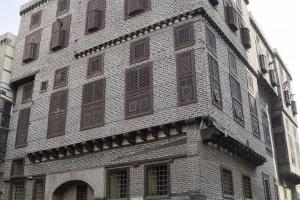The Rehabilitation of the Amasili Complex: Creating an Integrated Cultural Hub in the Heart of Rosetta
Amasili Complex Project aims to preserve and restore a historic Ottoman building and convert it into Cultural hub and museum. The objective is to ensure the preservation of the Amasili Complex for future generations by interventions that will slow the deterioration of the building and restoration of damaged areas. Project Director: Mohamed Kenawi, Cristina Mondin, Michele Asolati
| Amasili Complex Project aims to preserve and restore a historic Ottoman building and convert it into Cultural hub and museum. The objective is to ensure the preservation of the Amasili Complex for future generations by interventions that will slow the deterioration of the building and restoration of damaged areas. This will include rehabilitation of the rooms for meetings, research and exhibitions. The Amasili Complex is an excellent example of Ottoman architecture in Rosetta, and is thus capable of attracting academics and tourists. Therefore, it is destined to become a museum, exhibiting the different periods of occupation of the area. It will become a hub for all accredited archaeological missions working in the Western Delta, where knowledge will be shared among researchers and the public. |
Project Details
Location: Rosetta, Egypt, Northern Africa, Africa
Organiser(s):
University of Padua, Italian Egyptian Archaeological Center
Funder(s):
American Research Center in Egypt-Antiquities Endowment Fund, University of Padua, Ministry of Foreign Affairs and International Cooperation - Italy
Funding received: $97,116.50
Commencement Date: 07/2019
Project Status: Completed
Project owner? Update this project






